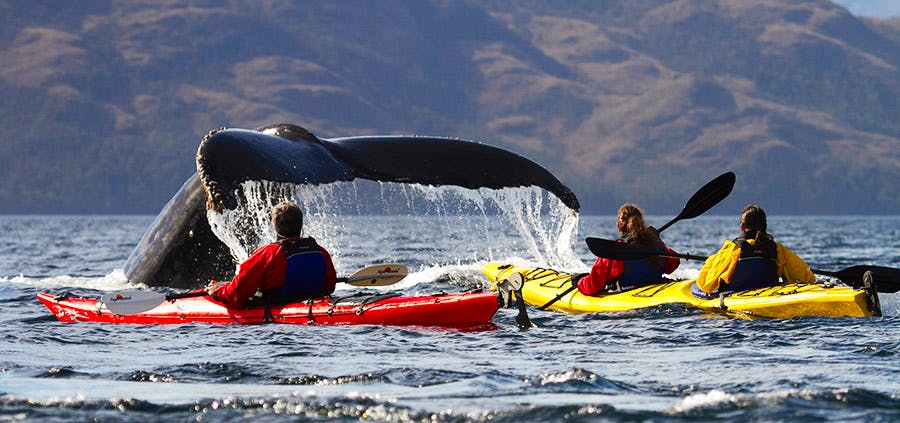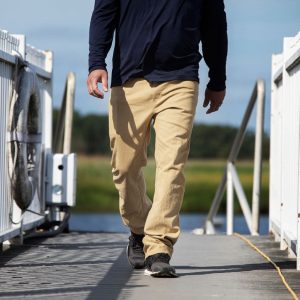Contents
Imagine a world where you can glide through crystal-clear waters, surrounded by stunning landscapes and untouched nature. Picture yourself in a kayak, feeling the gentle breeze against your face as you navigate through serene rivers and hidden coves. This is the essence of the “Exploring the Water: Kayak Adventure.” Whether you are an experienced kayaker or a novice, this exhilarating journey promises to ignite your sense of adventure and leave you with memories that will last a lifetime. So grab your paddle and get ready to embark on an unforgettable aquatic odyssey.
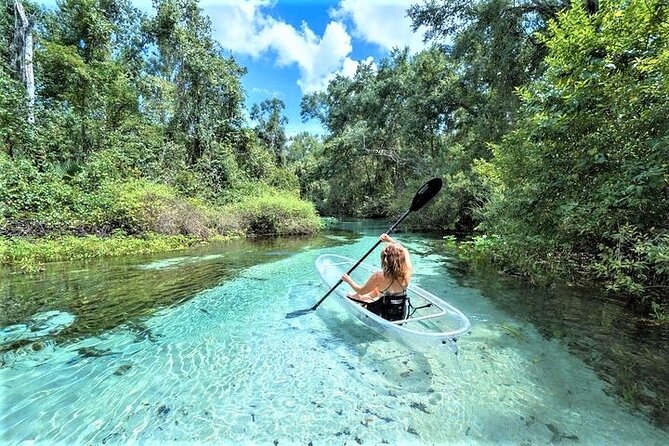
Preparation
Before embarking on a thrilling kayak adventure, it’s important to ensure you’re fully prepared. This involves choosing the right kayak that suits your needs, gathering essential gear and equipment, and considering safety considerations.
Choosing the Right Kayak
When it comes to choosing the right kayak, there are a few factors to consider. First, think about the type of kayaking you plan to do. Are you interested in exploring calm lakes, tackling white-water rapids, or navigating coastal shores? Each type of kayaking requires a different kayak design.
If you’re a beginner or planning to kayak in calm waters, a recreational kayak is a great option. These kayaks are stable and easy to maneuver. For more adventurous expeditions, such as white-water kayaking, a whitewater kayak with exceptional maneuverability and durability is a must.
Additionally, consider the size and weight of the kayak. Make sure it’s suitable for your body type and experience level. Sit-on-top kayaks provide more freedom of movement, while sit-inside kayaks offer better protection from the elements.
Essential Gear and Equipment
Equipping yourself with the right gear and equipment is essential for a successful and enjoyable kayak adventure. Here are some must-haves:
-
Personal Flotation Device (PFD): A PFD, commonly known as a life jacket, is crucial for safety on the water. Make sure it fits well and is properly secured.
-
Paddle: Choose a paddle with an appropriate length and material for your kayaking style. Test different types to find one that feels comfortable and suits your strength.
-
Dry Bag: Keep your belongings safe and dry by storing them in a waterproof dry bag.
-
Navigation Tools: Carry a compass and a map of your chosen kayaking location to assist with navigation.
-
Safety Equipment: Pack a whistle, waterproof flashlight, and a signaling mirror for emergency situations.
-
Protective Clothing: Dress appropriately for the weather conditions, wearing quick-drying and UV-protective clothing. Don’t forget a hat and sunscreen.
-
Bilge Pump or Sponge: These tools help remove any excess water that enters your kayak.
-
Repair Kit: Have a repair kit on hand to fix any minor damages to your kayak.
Remember to always bring more than enough water, snacks, and extra layers of clothing in case of unexpected weather changes.
Safety Considerations
Kayaking is a thrilling and rewarding activity, but safety should always be a top priority. Here are some safety considerations to keep in mind:
-
Check the Weather: Before heading out, review the weather forecast and tides. Avoid kayaking in severe weather conditions or strong currents.
-
Inform Others: Let a reliable person know about your kayaking plans, including your expected return time and location. This way, someone can alert authorities if you don’t return as planned.
-
Buddy System: Whenever possible, kayak with a buddy or a group. It’s safer and more enjoyable to have someone to assist you in case of emergencies.
-
Learn Basic First Aid: Having basic knowledge of first aid can be invaluable in case of injuries or accidents. Consider taking a first aid course to enhance your skills.
-
Avoid Alcohol and Drugs: Never consume alcohol or drugs before or during a kayaking adventure. They impair your judgment and increase the risk of accidents.
Remember, safety should never be compromised. Enjoy your kayak adventure responsibly by being well-prepared and aware of potential risks.
Selecting a Location
The location you choose for your kayak adventure greatly impacts the experience and opportunities available to you. Whether you prefer coastal adventures, river explorations, or serene lakes and reservoirs, there’s a perfect setting out there for everyone.
Coastal Adventures
For those seeking an awe-inspiring kayak adventure, coastal waters provide a wealth of opportunities. Paddle alongside breathtaking cliffs, explore hidden sea caves, and marvel at diverse marine life. Coastal adventures offer the chance to observe seabirds, seals, and even dolphins in their natural habitat.
When planning a coastal kayaking trip, consider the tides and currents. It’s important to be aware of tidal changes, as they can greatly affect your ability to navigate and access certain areas. Check tide charts and plan your trip accordingly to ensure a safe and enjoyable experience.
River Explorations
If you’re a thrill-seeker looking for an adrenaline-filled kayak adventure, river explorations are the perfect choice. Negotiate rapids, navigate through narrow canyons, and immerse yourself in the vibrant energy of rushing water.
Before embarking on a river kayaking trip, it’s essential to understand river currents and their behavior. Learn to read the water and identify potential hazards such as rocks, fallen trees, or strainers (obstacles that can trap a kayak).
Exploring Lakes and Reservoirs
For a more tranquil and serene kayak adventure, exploring lakes and reservoirs offers peace and solitude. Glide across calm waters, surrounded by stunning landscapes and abundant wildlife. It’s the perfect opportunity to reconnect with nature and escape the hustle and bustle of everyday life.
When choosing a lake or reservoir, consider the size and accessibility. Some larger bodies of water may have more boat traffic, while smaller and more remote lakes provide a more intimate experience. Check if there are any regulations or permits required before launching your kayak.
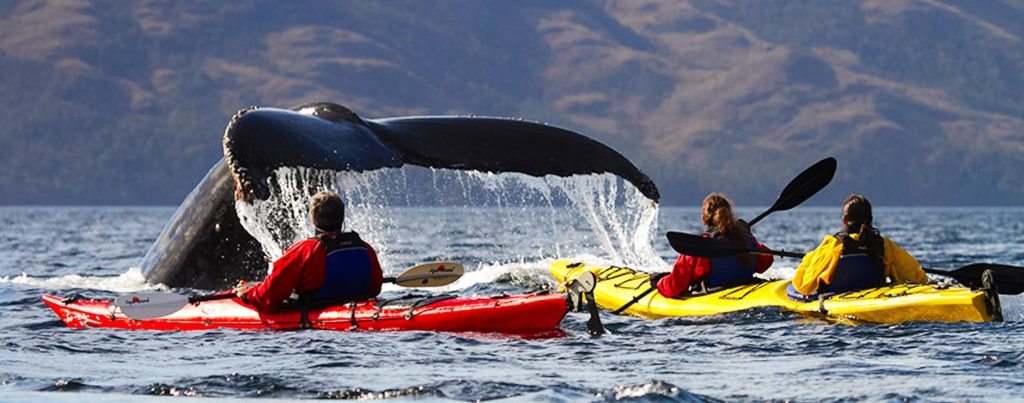
Tips for Beginner Kayakers
If you’re new to kayaking, fear not! With some basic paddling techniques and a few tips, you’ll be cruising through the water in no time.
Basic Paddling Techniques
Mastering the basic paddling techniques is the first step in becoming a confident kayaker. Here are the key techniques to focus on:
-
The Forward Stroke: The forward stroke is the most fundamental paddling technique. Start with the paddle blade in the water near your feet, then pull it backward, past your hips, and exit the water near your feet again. Rotate your torso to generate power and use your core muscles rather than relying solely on your arms.
-
The Reverse Stroke: The reverse stroke is used to go backward. Start with the paddle blade near your feet, push it forward, keeping the blade near the water’s surface until it exits near your feet.
-
Sweep Stroke: The sweep stroke is useful for making turns. It involves sweeping the paddle blade from the front of the kayak to the back in a wide arc.
-
Brace Stroke: The brace stroke helps you regain balance and prevent capsizing. Extend your paddle horizontally above the water’s surface on the side you’re leaning toward. This provides stability and keeps you upright.
Remember to practice these techniques in calm and controlled environments before tackling more challenging waters.
Navigating Rapids and Strong Currents
For those venturing into white-water kayaking, learning to navigate rapids and strong currents is crucial. Here are some tips to keep in mind:
-
Scout the Rapids: Before entering rapids, take the time to scout the water and identify your line of descent. Look for potential hazards or obstacles that may require maneuvering around.
-
Ferries and Eddies: Utilize the power of the river to your advantage. Ferrying involves paddling diagonally across a current to reach the other side. Eddies are calm areas behind rocks or obstacles where you can rest and regroup.
-
Maintain a Low Center of Gravity: To maintain balance and stability, lower your center of gravity by keeping your knees bent and engaging your core muscles. This also allows you to react quickly to sudden changes in the current.
-
Swim with Your Boat: If you do capsize, remember to swim with your boat downstream while keeping your feet up and pointing downstream as well. This reduces the risk of getting caught on rocks or other obstacles.
Dealing with Wind and Waves
Kayaking in windy conditions or choppy waters can pose a challenge. However, with the right techniques and some preparation, you can handle these conditions smoothly:
-
Lean Forward and Stay Low: When kayaking into the wind or waves, lean slightly forward to keep the bow of your kayak from rising too much. This minimizes the impact of the wind and waves, allowing you to maintain control.
-
Use a Low Paddle Angle: Adjust your paddle angle to minimize the resistance against the wind. Keep the paddle close to the water and use shorter, quicker strokes to maintain forward momentum.
-
Ride the Waves: When kayaking with the wind and waves at your back, enjoy the ride! Allow the waves to propel you forward and adjust your course as needed.
-
Be Mindful of Weather Conditions: Check weather forecasts before heading out and be prepared to adjust your plans if unfavorable conditions are predicted. Strong winds and rough waters can make kayaking more challenging and potentially dangerous.
Remember, practice makes perfect. Don’t be discouraged if it takes time to master these techniques. With experience and persistence, you’ll become a confident kayaker.
Planning Your Kayak Adventure
Planning is key when it comes to a successful and enjoyable kayak adventure. Take the time to set your goals and objectives, consider weather and tides, and create a detailed itinerary to make the most of your experience.
Setting Goals and Objectives
What do you hope to achieve from your kayak adventure? Setting clear goals and objectives helps you focus your efforts and design an itinerary that aligns with your interests.
Some possible goals could be to paddle a certain distance, explore a specific area, or challenge yourself with more difficult conditions. Whether it’s personal growth, exploration, or simply having fun, knowing your goals will guide your planning process.
Considering Weather and Tides
Weather conditions play a significant role in the safety and enjoyment of your kayak adventure. Check local weather forecasts and understand how weather patterns may impact things like wind strength, precipitation, and temperature.
Additionally, be aware of tide schedules if you’re kayaking in coastal areas. Tides can greatly affect water currents and access to certain areas, so plan accordingly. High tides may offer opportunities for exploring hidden caves or accessing narrow channels, while low tides may expose rocks or make certain areas too shallow.
Creating an Itinerary
Having a well-planned itinerary ensures you make the most of your kayak adventure. Consider the following when creating your itinerary:
-
Duration: Determine the duration of your trip, including the number of days and nights you’ll be kayaking.
-
Daily Routes: Plot out your daily routes, taking into account any attractions or areas of interest you want to visit.
-
Rest and Exploration Time: Allocate time for rest and exploration. Factor in breaks, meals, and opportunities to explore on foot.
-
Distance and Difficulty: Consider your physical fitness level and experience when deciding on the distance and difficulty of your daily paddles. Don’t push yourself beyond your limits.
-
Safety Measures: Plan for safety by informing others of your itinerary, including expected launch and return times. Be sure to carry safety equipment and know emergency contact information.
Remember that flexibility is important in case of unexpected changes in weather or conditions. Be prepared to adjust your itinerary if necessary to ensure your safety and comfort.
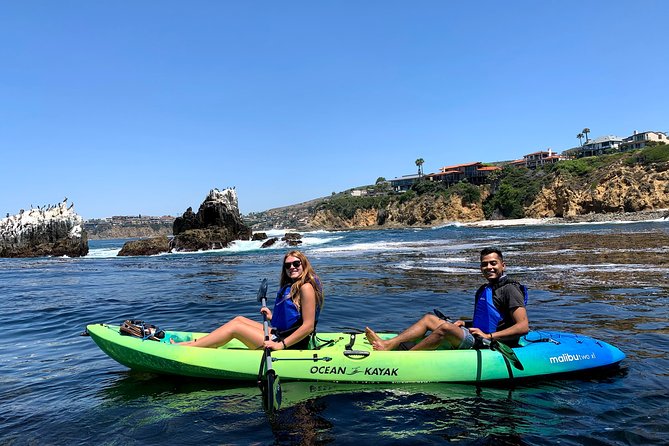
Solo vs. Group Expeditions
Deciding between a solo kayak adventure or opting for a group expedition is an important consideration. Each option has its own advantages and challenges, so think about your preferences and goals before embarking on your journey.
Advantages and Challenges of Solo Kayaking
Solo kayaking allows for complete freedom and independence. It offers a unique opportunity for self-reflection, solitude, and a chance to fully immerse yourself in nature. You have the flexibility to set your own pace, make spontaneous decisions, and enjoy the tranquility of your surroundings.
However, solo kayaking also comes with certain challenges. Being alone means you’re solely responsible for your safety and well-being. It’s crucial to have the necessary skills and knowledge to handle emergencies should they arise. Additionally, the absence of a companion means you won’t have immediate assistance if you run into difficulties.
Benefits of Group Kayaking
Group kayaking expeditions offer a sense of camaraderie, shared experiences, and an added level of safety. By kayaking with others, you have a built-in support system and immediate assistance if needed. Group dynamics can enhance the overall enjoyment of the trip and provide opportunities for learning and growth.
Additionally, group kayaking allows for the division of tasks and responsibilities, making logistics and decision-making more manageable. Sharing the experience with like-minded individuals can foster new friendships and create lifelong memories.
Finding Like-minded Adventurers
Whether you choose solo or group kayaking, connecting with like-minded individuals can enrich your experience. Join local kayaking clubs, attend paddling events, or participate in guided tours to meet fellow enthusiasts. Online communities and forums also provide a platform to connect with other kayakers, exchange tips, and even find potential travel companions.
Remember, the most important element is to prioritize safety. If you’re embarking on a solo adventure, ensure you have the necessary skills and experience to handle the challenges. When in a group, communicate openly, establish clear guidelines, and respect each other’s abilities and boundaries.
Exploring Marine Environments
One of the remarkable aspects of kayaking is the opportunity it provides to explore diverse marine environments. Whether you’re fascinated by marine life, remote islands, or snorkeling and diving, kayaking opens doors to unforgettable experiences.
Observing Marine Life
Kayaking allows for unique and up-close encounters with marine life. Glide silently through the water and observe sea birds soaring above, seals basking on rocky outcrops, and dolphins playfully surfacing alongside your kayak. Keep a respectful distance and refrain from interfering with their natural behavior.
Remember to bring binoculars or a camera with a zoom lens to capture these incredible moments while maintaining a safe distance.
Visiting Remote Islands
Kayaks provide access to remote islands and areas inaccessible to larger boats. Paddle to secluded shores, set foot on uninhabited islands, and feel a sense of discovery and adventure. These hidden gems often offer pristine beaches, wildlife sanctuaries, and breathtaking landscapes that few have the opportunity to experience.
Make sure to obtain the necessary permits and follow any regulations when visiting protected areas. Leave no trace and respect the delicate ecosystems you encounter.
Snorkeling and Diving Opportunities
Many kayakers love to combine their adventures with snorkeling or diving opportunities. Kayaking allows for easy transportation to shallow reefs or calm coves where you can explore vibrant underwater worlds. Snorkel alongside colorful fish, view coral formations, and witness the wonders of the marine ecosystem.
If you plan to snorkel or dive during your kayak adventure, ensure you have the appropriate gear, including a wetsuit or snorkeling mask, fins, and a dive flag for visibility. Familiarize yourself with local regulations and guidelines to ensure a safe and environmentally friendly experience.
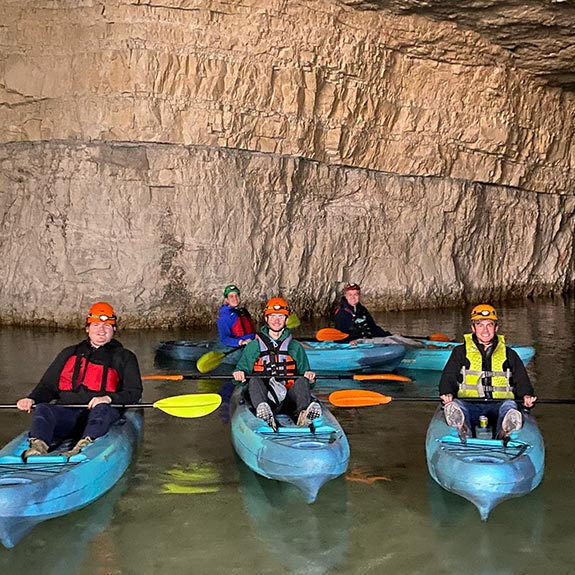
Navigating Rivers and Streams
Rivers and streams provide a unique and exhilarating kayaking experience. Whether you’re cruising down a gentle river or tackling challenging rapids, understanding river currents, handling obstacles, and utilizing proper river camping techniques are essential.
Understanding River Currents
River currents are constantly changing and can be unpredictable. It’s crucial to understand their behavior and how they affect your kayak. Here are three types of river currents to be aware of:
-
Laminar Flow: Laminar flow is smooth, steady current characterized by a uniform speed and direction. It tends to be the easiest to paddle through and is commonly found in wider and deeper sections of rivers.
-
Standing Waves: Standing waves form when water encounters an obstruction, causing it to rise and crest. When kayaking through standing waves, it’s important to maintain balance and keep your kayak pointed directly into the waves.
-
Eddies: Eddies are circular or whirlpool-like areas where the current flows in the opposite direction from the main current. They can be used strategically to rest or plan your next move.
Understanding these currents and how they interact with each other is crucial for safe and efficient river navigation.
Handling Rapids and Obstacles
Rapids are thrilling and challenging features of river kayaking. However, they require careful navigation and the use of specific techniques. Here are some tips for handling rapids:
-
Reading Rapids: Before tackling rapids, evaluate the water’s behavior. Learn to read the river and identify the best line of descent, avoiding potential hazards like rocks or fallen trees.
-
Adjusting Your Technique: When paddling through rapids, adopt a defensive paddling technique. Keep your paddle close to the water and use shorter strokes for increased control. Stay low and engage your core muscles to maintain balance.
-
Communicate and Work Together: If you’re kayaking with a group, establish clear communication signals and strategies. Coordinate with your fellow kayakers to navigate rapids safely.
-
Bracing and Rolling: Developing bracing and rolling techniques is vital for river kayaking. These techniques help you recover if you capsize in rapids.
River Camping Tips
Multi-day river kayaking trips often involve camping alongside the water. Here are some tips for successful river camping:
-
Choose Suitable Campsites: Look for established campsites or clearings along the riverbank. Set up your camp away from the water’s edge to avoid rising water levels or unexpected flooding.
-
Secure Your Kayak: Properly secure your kayak before setting up camp. Tie it securely to a tree or a rock to prevent it from drifting away.
-
Campfires and Cooking: Before starting a campfire, check local regulations regarding fire safety and potential fire bans. Use a camp stove for cooking to minimize environmental impact and fire risks.
-
Leave No Trace: Respect the natural environment and practice Leave No Trace principles. Pack out all trash, dispose of waste properly, and minimize your impact on the river ecosystem.
Remember, river kayaking can be physically demanding and requires proper training and experience. Always assess your skills and choose rivers that align with your abilities.
Safety Considerations
Safety should always be the top priority when embarking on a kayak adventure. Here are some key safety considerations to keep in mind:
Importance of Wearing a Life Jacket
Wearing a well-fitted personal flotation device (PFD), commonly known as a life jacket, is crucial for kayaking safety. A PFD provides buoyancy and can save your life in case of capsizing or unexpected emergencies.
Ensure your PFD is U.S. Coast Guard-approved, fits correctly, and is properly fastened before launching your kayak. Remember, a PFD is only effective if it’s worn.
Weather Monitoring and Emergency Plans
Keep a close eye on weather forecasts before and during your kayaking adventure. Sudden changes in weather conditions can pose risks, such as strong winds, thunderstorms, or cold fronts. It’s essential to assess weather patterns and plan accordingly.
Create an emergency plan that includes designated meeting points, communication methods, and actions to take in case of an emergency. Share this plan with a reliable person who can contact authorities if needed. Carry a waterproof flashlight, whistle, and signaling mirror as emergency signaling devices.
Basic First Aid Knowledge
Accidents and injuries can happen, even in the safest of conditions. Basic first aid knowledge is invaluable in managing injuries until professional medical help arrives. Consider taking a first aid course to learn essential skills, such as wound care, CPR, and how to treat common outdoor injuries.
Carry a well-stocked first aid kit that includes bandages, antiseptic ointment, adhesive tape, pain relievers, and any prescribed medications. Be familiar with the contents of your kit and know how to use them effectively.
Remember, prevention is always better than cure. Follow safety guidelines, use proper equipment, and make informed decisions to minimize risks while enjoying your kayak adventure.
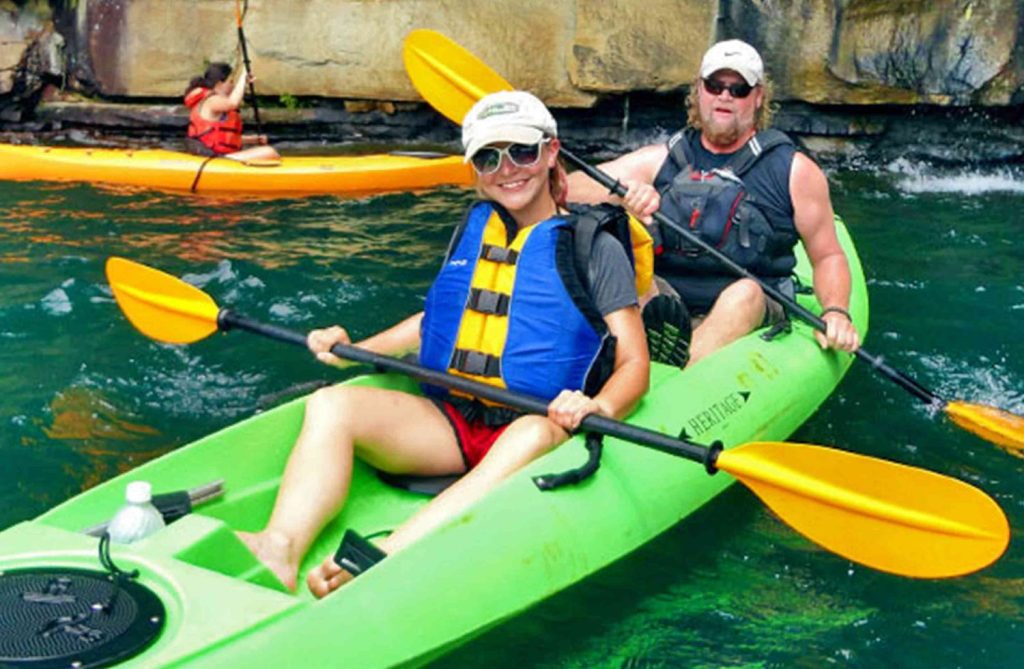
Overnight Kayak Trips
Overnight kayak trips offer a unique opportunity to extend your adventure and fully immerse yourself in the outdoor experience. Properly packing essential camping gear, choosing suitable campsites, and planning meals are crucial for a successful overnight kayak trip.
Packing Essential Camping Gear
When packing for an overnight kayak trip, space and weight are limited, so prioritize packing essential items only. Here’s a list of essential camping gear:
-
Tent: Choose a lightweight, waterproof tent that can accommodate the number of people on your trip.
-
Sleeping Gear: Pack a sleeping bag suitable for the expected temperatures, and a sleeping pad for insulation and comfort.
-
Cooking Equipment: Carry a compact camping stove, lightweight cookware, utensils, and a reliable fire starter. Opt for dehydrated or lightweight meals to minimize weight.
-
Water Filtration: Ensure you have a water filtration system to access clean drinking water during your trip. Portable water filters or purification tablets are great options.
-
Lighting: Pack a lightweight, waterproof headlamp or flashlight with spare batteries.
-
Camp Furniture: Consider bringing a compact camp chair or seat pad for added comfort during downtime.
-
Clothes and Personal Items: Pack quick-drying and moisture-wicking clothing suitable for the expected weather conditions. Include personal hygiene items, toiletries, and a towel.
Remember, pack only what you truly need to minimize weight and maximize space in your kayak.
Choosing Suitable Campsites
Selecting suitable campsites is crucial for a comfortable and rewarding overnight kayak trip. Here are some factors to consider:
-
Accessibility: Choose campsites easily accessible by kayak, preferably with calm and sheltered water for easy navigation and landing.
-
Privacy: Look for secluded campsites where you can enjoy privacy and tranquility.
-
Scenic Views: Opt for sites with stunning views or unique features like sunsets, mountains, or serene water bodies.
-
Protection from Elements: If possible, select campsites that offer natural protection from wind or have trees for shade during hot days.
Check local regulations and obtain any necessary permits before camping. Always follow leave-no-trace principles, respect the environment, and leave your campsite as you found it.
Meal Planning and Cooking
Meal planning and cooking can be a delightful part of the overnight kayak trip experience. Here are some tips to consider:
-
Pack Lightweight Food: Opt for lightweight and dehydrated meals that require minimal preparation and cooking time. Long-lasting snacks like nuts, energy bars, and dried fruits are great for quick bites.
-
Meal Varieties: Plan meals that contain a good balance of proteins, carbohydrates, and nutrients to sustain your energy during the trip. Consider pre-cooked or canned options for convenience.
-
Cooking Methods: Choose cooking methods that are compact and efficient. Portable camping stoves, small pots, and frying pans are ideal for kayaking trips.
-
Waste Management: Minimize waste by repackaging food in reusable containers or ziplock bags. Properly dispose of food scraps and ensure you leave no trace.
Remember to pack enough water for drinking and cooking, or utilize a reliable water filtration system to access clean water on your journey.
Kayak Fishing Adventures
Combining your love for kayaking and fishing creates an exciting and rewarding adventure. Kayaks provide excellent access to remote fishing spots and allow for a stealthy approach. Before embarking on a kayak fishing trip, consider the following:
Selecting Fishing-friendly Kayaks
When choosing a kayak for fishing, there are a few key features to look out for:
-
Stability: Opt for a kayak with excellent stability to ensure comfort and balance while fishing.
-
Storage: Look for kayaks with ample storage space for fishing gear and equipment. This may include gear tracks, rod holders, and hatches.
-
Maneuverability: Kayaks with good maneuvering capabilities allow you to navigate easily to your desired fishing spots effectively.
-
Portability: Consider the weight and size of the kayak when transporting it to and from the water. Ensure it’s manageable for your needs.
Take time to research and test different kayak models to find the one that suits your fishing style and preferences.
Essential Fishing Gear and Techniques
When kayak fishing, packing the right gear and utilizing effective techniques are essential for success. Here are some key items to include:
-
Fishing Rod and Reel: Choose a fishing rod and reel that suits your target species and preferred fishing style.
-
Tackle Storage: Utilize waterproof boxes or bags to store your various fishing tackle, including lures, hooks, and sinkers.
-
Safety Equipment: Carry fishing-specific safety equipment, including a fishing knife, pliers, and a first aid kit.
-
Anchoring System: Invest in a reliable anchoring system to maintain position while fishing. Anchor trolleys or stake-out poles are popular options.
-
Fish Finder: Consider using a fish finder to locate schools of fish and increase your chances of a successful catch.
Become familiar with kayak fishing techniques such as casting, trolling, and vertical jigging. Research local fishing regulations, obtain necessary permits, and practice catch-and-release to preserve the ecosystem.
Choosing Ideal Fishing Locations
Kayak fishing opens up a vast array of fishing locations. From calm lakes to coastal bays and rivers, the options are endless. Here are a few tips for choosing ideal fishing locations:
-
Research Local Fishing Reports: Check local fishing reports or consult with knowledgeable anglers to gather information about productive fishing spots in your area.
-
Explore Online Resources: Utilize online resources, fishing forums, or apps to discover fishing hotspots and gain insight into the species you can expect to catch.
-
Adapt to Weather: Consider weather conditions and their impact on fish behavior. Fish tend to be more active during favorable conditions, such as cooler temperatures or overcast skies.
-
Wildlife Indicators: Observe wildlife activity such as birds diving or feeding on fish to identify areas with potential fish abundance.
Remember to respect the environment and practice responsible fishing practices. Always follow catch limits, handle fish properly, and release them unharmed when necessary.
Kayak fishing combines the thrill of angling with the joy of exploring the water. Whether it’s your first kayak fishing adventure or you’re a seasoned angler, there’s always something new and exciting to discover.
In conclusion, kayaking offers endless possibilities for adventure, exploration, and enjoyment. From selecting the right kayak, gear, and equipment to choosing suitable locations and planning itineraries, careful preparation ensures a safe and fulfilling experience. Whether you’re gliding through coastal waters, navigating challenging rapids, or quietly fishing on a serene lake, each kayak adventure is an opportunity to connect with nature, challenge yourself, and create memories that will last a lifetime. So, grab your paddle, put on your life jacket, and dive into the thrilling world of kayak exploration. Happy kayaking!

